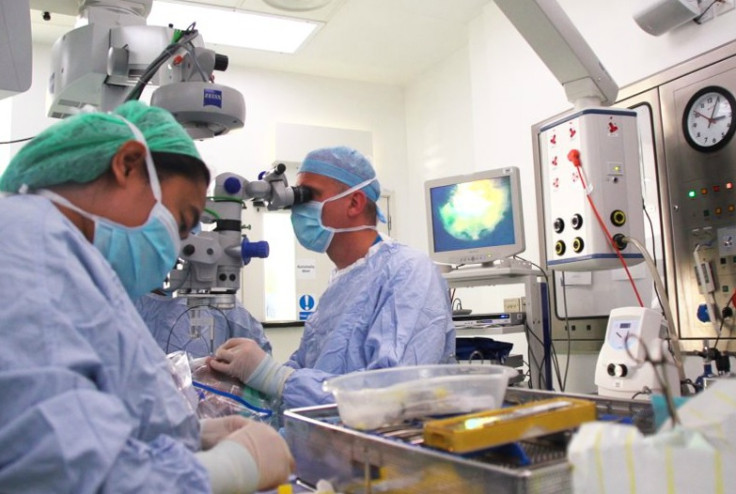Blindness Cure Hope: Genetically Modified Virus Restores Sight in Choroideremia Patients

Hope of a cure for a form of progressive blindness has moved forward following a promising clinical trial, where gene therapy was used to restore sight to choroideremia patients.
Researchers at Oxford University said their trial surpassed their expectations in treating the inherited condition, with patients showing improvements in their vision six months after the treatment.
The team used a genetically modified virus and inserted it into the cells in the retina of the eye without causing damage. The first six patients to receive the treatment had all shown improvements to their vision in dim light, with two being able to read more lines on the eye chart.
Choroideremia is a genetic degenerative disease that affects the choroid and retina. The disease progresses throughout the sufferer's life and night-time blindness is often one of the first symptoms. It affects around one in 50,000 people.
It is caused by defects in the CHM (choroideremia) gene on the X chromosome, which is why it is almost exclusively only affects men. Without the protein produced by the CHM gene, pigment cells in the retina stop working and eventually die off.
Professor Robert MacLaren, of the Nuffield Laboratory of Ophthalmology at the University of Oxford, led the development of the gene therapy and the clinical trial: "It is still too early to know if the gene therapy treatment will last indefinitely, but we can say that the vision improvements have been maintained for as long as we have been following up the patients, which is two years in one case," he said.
"The results showing improvement in vision in the first six patients confirm that the virus can deliver its DNA payload without causing significant damage to the retina.

"This has huge implications for anyone with a genetic retinal disease such as age-related macular degeneration or retinitis pigmentosa, because it has for the first time shown that gene therapy can be applied safely before the onset of vision loss."
The gene therapy uses a small safe virus to carry the missing CHM gene into the retina. It is an operation similar to cataract surgery, where the patient's retina is detached and the virus is injected underneath.
MacLaren said: "If we were able to treat people early, get them in their teens or late childhood, we'd be getting the virus in before their vision is lost. If the treatment works, we would be able to prevent them from going blind.
"What's really exciting is that the improvement in these two patients at six months is significant and it has so far been maintained.
"I am incredibly excited to see what will happen. The difficult bits are done: we know the virus carrying the gene therapy gets into the cells and the retina recovers after the surgery. Now it's just waiting to see how the patients progress."
Speaking about the improvements in his sight, Jonathan Wyatt, one of the first patients to have the surgery, said: "My left eye, which had always been the weaker one, was that which was treated as part of this trial.
"Now when I watch a football match on the TV, if I look at the screen with my left eye alone, it is as if someone has switched on the floodlights. The green of the pitch is brighter, and the numbers on the shirts are much clearer."
© Copyright IBTimes 2024. All rights reserved.






